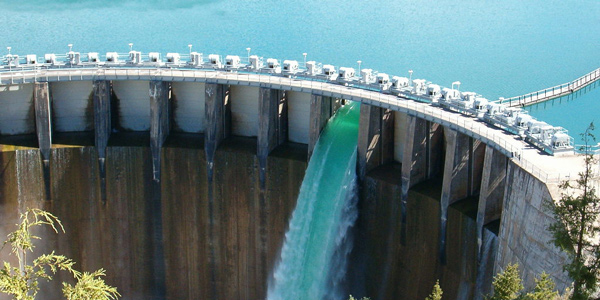By Rich Heidorn Jr.
FERC may consider additional changes to its hydropower licensing rules following a review prompted by President Trump’s March 2017 executive order to eliminate burdens on domestic power production.
Executive Order 13783, “Promoting Energy Independence and Economic Growth,” required executive branch officials to review their regulations, orders and policies and eliminate those that “unduly burden the development of domestic energy resources.”
On Nov. 1, FERC published in the Federal Register a 30-page report in response, saying it had found several potential changes involving its hydropower rules that the commission may consider. Commission staff emphasized that, as an independent agency, it was not required to respond to the order but was doing so voluntarily.
The report said “the vast majority of agency actions relating to the commission’s hydropower program do not present a material burden.”
But it said the commission “could consider” revising its regulations to:
- Make optional the integrated licensing process (ILP), which is currently the default — requiring applicants to justify the use of the traditional licensing process or the alternative licensing process;
- Make optional the requirement to submit a draft license application or preliminary licensing proposal before submitting a final license application as part of the prefiling process;
- Reducing comment and filing deadlines to save three months in the three- to three-and-a-half-year process for obtaining an integrated license;
- Increasing the threshold — currently 5 MW — for eligibility for the “simplified and expeditious licensing procedure for small hydroelectric power projects” under the Public Utility Regulatory Policies Act;
- Removing the requirement that facilities eligible for license exemptions under PURPA Section 405 install or increase the capacity of their facilities;
- “Explicitly” allow applicants for small hydropower exemptions to convert their exemption applications to a license application if the exemption is rejected; and
- Allow hydro operators whose license applications are rejected to resubmit their applications once the deficiencies are corrected.
Next Steps up to Commission
FERC spokeswoman Mary O’Driscoll emphasized that the response is a FERC staff report. “The commission itself will determine what steps to take on any and all matters related to this,” she said in an email. “We cannot predict, nor can we surmise, what the commission will do in the future.”
The response to the executive order also says the commission “currently is considering comments” on its policies on the length of hydropower licenses, an apparent reference to the responses to its 2016 Notice of Proposed Rulemaking (RM17-4).

Kerr Dam in Montana
O’Driscoll explained that the staff response was due Sept. 27, before the commission’s Oct. 19 meeting, at which it approved a policy statement setting a 40-year default license term. The commission said the change will reduce administrative costs and encourage dam owners to upgrade capacity and make environmental or recreational investments (PL17-3). (See FERC Sets 40-Year Term for Hydro Licenses.)
Prefiling Requirement for LNG Terminals
Commission staff also reviewed but found no rules to recommend changing regarding LNG terminals; natural gas pipeline and storage facility siting; generator interconnection policies; and electric capacity markets in PJM, ISO-NE and NYISO.
For example, staff examined the prefiling process for LNG terminals and related facilities but ultimately decided “there is no need for the commission to consider any revision.”
Commission regulations require applicants to use its prefiling process for at least 180 days before filing an application. Staff said that although the Natural Gas Act only requires prefilings for terminals and not “related” facilities, gas pipelines and the terminals they serve need to be evaluated together to avoid segmentation under the National Environmental Policy Act.
“Further, the prefiling process allows stakeholders to become involved in the overall project at an early stage, and applicants can benefit from stakeholders’ early identification and resolution of issues that may overlap with the LNG terminal. Without using the prefiling process for related jurisdictional natural gas facilities, delays could occur during the application review, when issues are first identified and need resolution,” staff said. “Thus, although this regulation may result in delays or additional costs to the applicant early on in a project’s development, its overall result is a more timely application review.”



